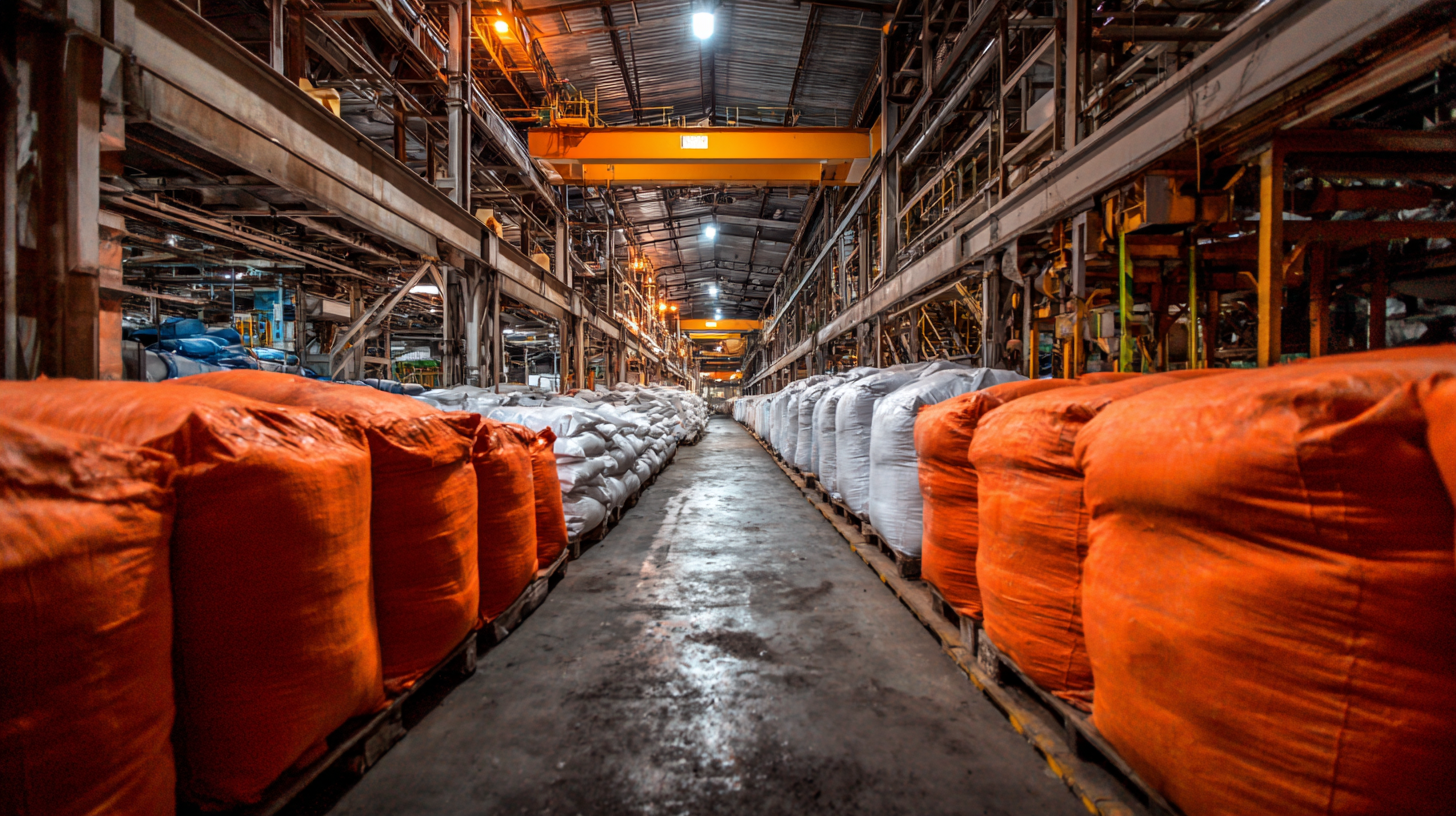
5 Essential Tips for Sourcing Quality Raw Materials to Boost Production Efficiency
In the ever-evolving landscape of manufacturing and production, the significance of Quality Raw Materials cannot be overstated. The foundation of any successful production process lies in the materials utilized; thus, sourcing top-notch raw materials is crucial for enhancing operational efficiency and product quality. In this article, we will explore five essential tips that can guide businesses in their quest for high-quality inputs. By prioritizing the selection of premium raw materials, manufacturers can not only optimize their production processes but also reduce costs associated with defects and inefficiencies.
Understanding the options available in the market is just the beginning. Effective sourcing involves not only evaluating the quality of materials but also establishing robust relationships with suppliers who prioritize excellence. This approach not only ensures a steady supply chain but also fosters innovation and improvement in production methodologies. Adopting best practices in sourcing Quality Raw Materials is vital for companies aiming to maintain a competitive edge in their respective industries. By implementing the tips outlined in this article, businesses can significantly enhance their production efficiency and product offerings, paving the way for sustained growth and success.

Identifying Reliable Suppliers for Consistent Raw Material Quality
When it comes to sourcing quality raw materials, identifying reliable suppliers is crucial for ensuring consistent quality. A dependable supplier not only provides materials that meet specifications but also understands the importance of your production timeline. To find such suppliers, businesses should first conduct thorough research, seeking recommendations and references from industry peers. This step helps establish a shortlist of potential suppliers who have a proven track record in delivering quality materials.
Additionally, fostering strong relationships with suppliers is key to maintaining a consistent supply chain. Regular communication allows for transparency regarding availability, pricing, and any potential changes in material quality. Establishing clear expectations upfront and discussing quality assurance standards can prevent misunderstandings and ensure that suppliers uphold their commitments. Evaluating suppliers based on their responsiveness, reliability, and ability to meet your specific requirements can further enhance the efficiency of production processes and bolster overall business performance.
Evaluating Material Specifications to Match Production Needs
When sourcing quality raw materials, evaluating material specifications is crucial to align with production needs. According to a report by Technavio, the global raw materials market is expected to grow by over 4% annually from 2023 to 2027. This highlights the importance of selecting materials that not only meet regulatory standards but also contribute to operational efficiency. For instance, manufacturers in the automotive industry have found that specifying lightweight materials can enhance fuel efficiency, leading to reduced operational costs.
Moreover, understanding the unique characteristics of materials—such as tensile strength, thermal resistance, and chemical composition—can significantly impact production outcomes. A study by McKinsey & Company indicates that companies that invest in optimal material sourcing can reduce their production costs by up to 20%. This underscores the need for businesses to adopt comprehensive material evaluation processes, ensuring that selected specifications boost productivity and maintain quality standards throughout the production cycle. By rigorously assessing material properties, companies can not only enhance their production efficiency but also ensure sustainable practices that align with industry advancements.
5 Essential Tips for Sourcing Quality Raw Materials to Boost Production Efficiency - Evaluating Material Specifications to Match Production Needs
| Material Type | Quality Standards | Supplier Rating (1-5) | Lead Time (Days) | Cost per Unit ($) |
|---|---|---|---|---|
| Steel | ASTM A36 | 4 | 15 | 1.50 |
| Aluminum | 6061-T6 | 5 | 10 | 2.20 |
| Plastic | ISO 9001 | 3 | 5 | 0.50 |
| Copper | C11000 | 4 | 20 | 3.00 |
| Wood | FSC Certified | 5 | 7 | 1.80 |
Implementing Quality Control Processes in Raw Material Sourcing
Implementing robust quality control processes in raw material sourcing is crucial for companies aiming to enhance production efficiency. According to a report by the International Organization for Standardization (ISO), effective quality management can help organizations reduce material costs by up to 20%. This significant saving underscores the importance of rigorously monitoring the procurement process to ensure that materials meet the required standards.

Quality control processes should be integrated at every stage of sourcing, starting from the selection of suppliers. A study by Deloitte indicates that 65% of manufacturing defects can be traced back to poor raw material quality. Companies should establish clear specifications and evaluate suppliers accordingly, employing metrics such as defect rates and on-time delivery performance. Additionally, implementing regular audits and testing protocols can further mitigate risks associated with quality and enhance the overall reliability of the supply chain, ultimately leading to increased production efficiency.
Leveraging Technology for Smarter Raw Material Procurement
In the modern manufacturing landscape, leveraging technology for raw material procurement is crucial for enhancing production efficiency. Utilizing advanced software solutions can streamline the sourcing process, allowing companies to identify reliable suppliers, negotiate better prices, and track inventory in real-time. Automation tools can aid in managing supplier relationships, ensuring that businesses remain agile in a rapidly changing market.
One essential tip for sourcing quality raw materials is to embrace data analytics. By analyzing historical purchasing data and market trends, businesses can make informed decisions about their procurement strategies. This not only helps in selecting the right suppliers but also in anticipating market fluctuations, allowing for more adaptive production planning.
Another critical aspect is the integration of a digital supply chain management system. Such systems can provide visibility across the entire supply chain, from raw material procurement to production. This transparency enables companies to respond swiftly to disruptions and optimize their inventory levels, ultimately boosting production efficiency. By harnessing these technological advancements, businesses can achieve a significant competitive edge in the market.
Raw Material Procurement Efficiency
Building Strong Supplier Relationships for Long-Term Efficiency
Building strong supplier relationships is crucial for businesses looking to enhance production efficiency. According to a report by Deloitte, companies that cultivate long-term partnerships with suppliers can reduce procurement costs by up to 30%. This reduction not only improves bottom lines but also allows for reinvestment into production processes, driving overall efficiency.

Effective communication is the cornerstone of any successful supplier relationship. Regularly engaging with suppliers fosters transparency and encourages collaboration on quality and delivery issues. A study conducted by the Harvard Business Review indicates that firms with robust supplier relationships report a 50% increase in on-time delivery, which directly correlates to smoother operational workflows and reduced downtime in production. By prioritizing these relationships, companies can ensure they have a reliable supply of quality raw materials, essential for maintaining high production standards.
Furthermore, strategic partnerships can lead to innovations in product development and process optimization. A report from McKinsey highlights that companies investing in collaborative supplier engagements can enhance their innovation outputs by up to 70%. By leveraging suppliers’ expertise, businesses not only secure high-quality materials but also gain insight into industry trends that propel their production efficiency forward.
Related Posts
-

The Science Behind Quality Raw Materials: How They Impact Product Integrity and Sustainability
-

Global Trust in Chinese Manufacturing Through the Best Quality Raw Materials
-

7 Key Reasons Why Quality Raw Materials Drive 50% More Profitability in Manufacturing
-

2025 Global Market Insights: 7 Essential Tips for Sourcing Pharmaceutical Products Effectively
-

Issues Facing the Best Peptide Materials in Pharmaceutical Applications
-

5 Reasons Why You Should Choose the Best Pharmaceutical Products for Global Sourcing
